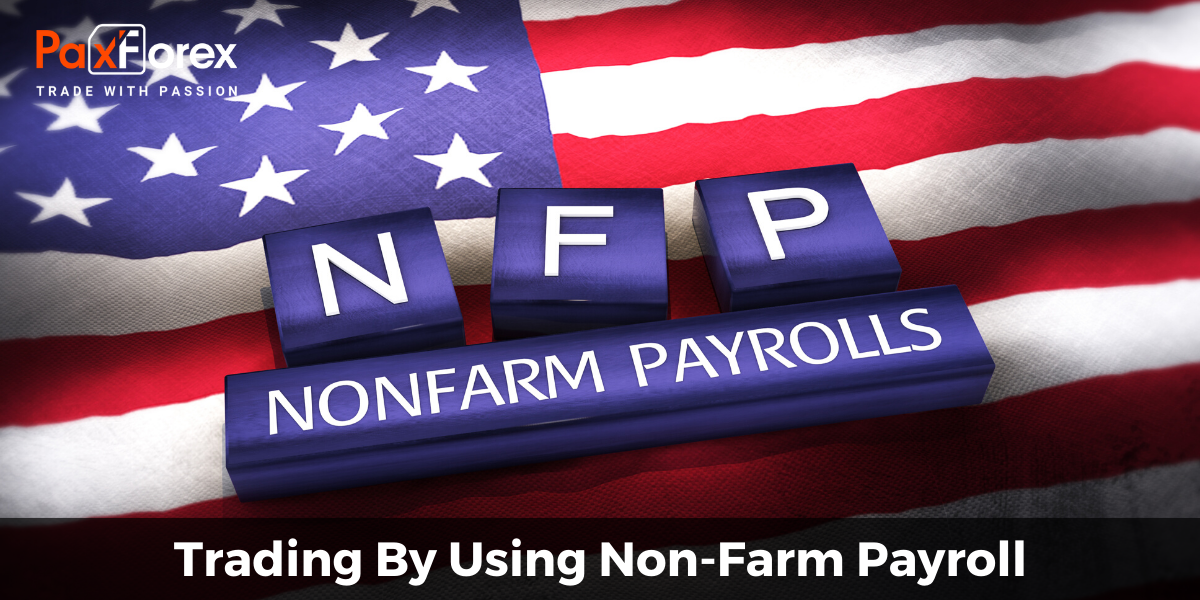
The non-farm payroll (NFP) report is a key economic indicator for the United States. It is intended to represent the total number of paid workers in the U.S. minus farm employees, government employees, private household employees and employees of nonprofit organizations.
The NFP report causes one of the consistently largest rate movements of any news announcement in the forex market. As a result, many analysts, traders, funds, investors and speculators anticipate the NFP number - and the directional movement it will cause. With so many different parties watching this report and interpreting it, even when the number comes in line with estimates, it can cause large rate swings. Read on to find out how to trade this move without getting knocked out by the irrational volatility it can create.
Trading news releases can be very profitable, but it is not for the faint of the heart. This is because speculating on the direction of a given currency pair upon the release can be very dangerous. Fortunately, it is possible to wait for the wild rate swings to subside. Then, traders can attempt to capitalize on the real market move after the speculators have been wiped out or have taken profits or losses. The purpose of this is to attempt to capture rational movement after the announcement, instead of the irrational volatility that pervades the first few minutes after an announcement.
The release of the NFP generally occurs on the first Friday of every month at 8:30 a.m. EST. This news release creates a favorable environment for active traders, in that it provides a near guarantee of a tradable move following the announcement. As with all aspects of trading, whether we make money on it is not assured. Approaching the trade from a logical standpoint, based on how the market is reacting, can provide us with more consistent results than simply anticipating the directional movement the event will cause.
The NFP report generally affects all major currency pairs, but one of the favorites among traders is the GBP/USD. Because the Forex market is open 24 hours a day, all traders have the capability to trade the news event.
The logic behind the strategy is to wait for the market to digest the information's significance. After the initial swings have occurred, and after market participants have had a bit of time to reflect on what the number means, they will enter a trade in the direction of the dominating momentum. They wait for a signal that indicates the market may have chosen a direction to take rates. This avoids getting in too early and decreases the probability of being whipsawed out of the market before the market has chosen a direction.
The strategy can be traded off of five- or 15-minute charts. For the rules and examples a 15-minute chart will be used, although the same rules apply to a five-minute chart. Signals may appear on different time frames, so stick with one or the other.
Nothing is done during the first bar after the NFP report (8:30 to 8:45 a.m. in the case of the 15-minute chart).
The bar created at 8:30 to 8:45 will be wide ranging. Traders wait for an inside bar to occur after this initial bar (it does not need to be the very next bar). In other words, they are waiting for the most recent bar's range to be completely inside the previous bar's range.
This inside bar's high and low rate sets up our potential trade triggers. When a subsequent bar closes above or below the inside bar, market participants take a trade in the direction of the breakout. They can also enter a trade as soon as the bar moves past the high or low without waiting for the bar to close. Whichever method you choose, stick to it.
Place a 30-pip stop on the trade you entered.
Make up to a maximum of two trades. If both get stopped out, don't re-enter. The inside bar's high and low are used again for a second trade if needed.
The target is a time target. Generally, most of the move occurs within four hours. Thus, traders exit four hours after their entry time. A trailing stop is an alternative if traders wish to stay in the trade.
While this strategy can be very profitable, it does have some pitfalls to be aware of. For one, the market may move in one direction aggressively and thus may be beginning to fade by the time we get an inside bar signal. In other words, if a strong move occurs prior to the inside bar, it is possible a move could exhaust itself before we get a signal. It is also important to note that in high volatility times, even after waiting for a pattern setup, rates can reverse quickly. This is why it very important to have a stop in place.
The logic behind this strategy of trading the NFP report is based on waiting for a small consolidation, the inside bar, after the initial volatility of the report has subsided and the market is choosing which direction it will go. By controlling risk with a moderate stop we are poised to make a potentially large profit from a huge move that almost always occurs each time the NFP is released.







